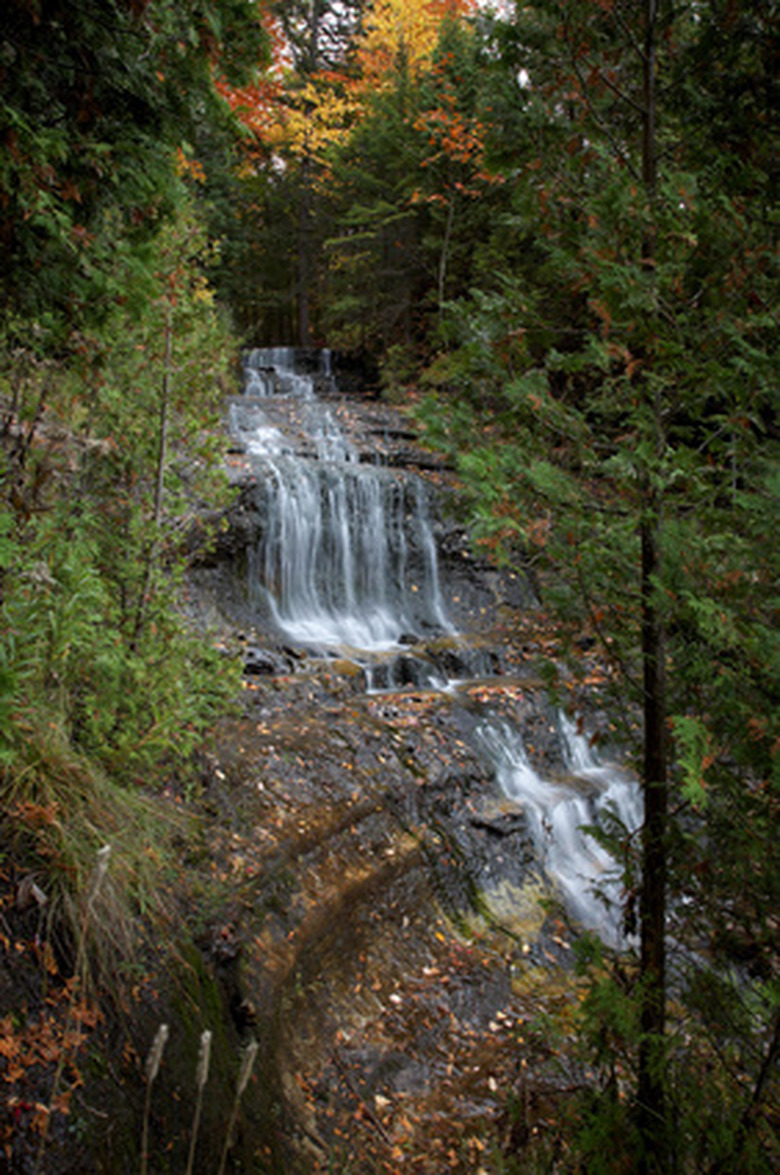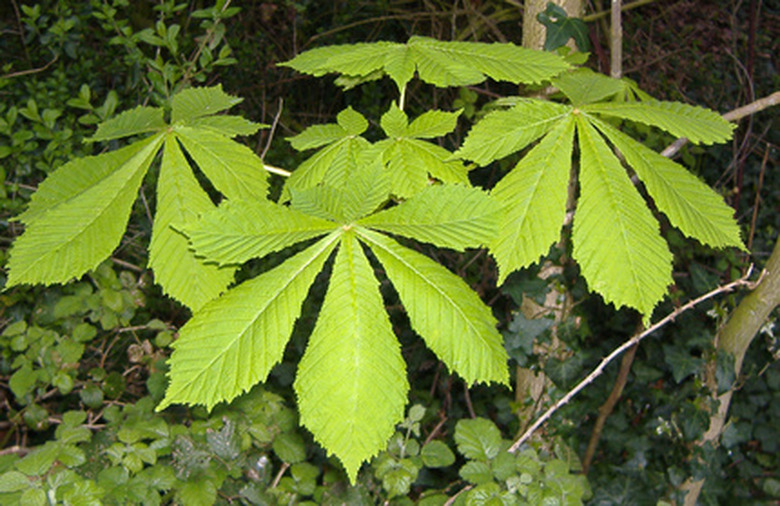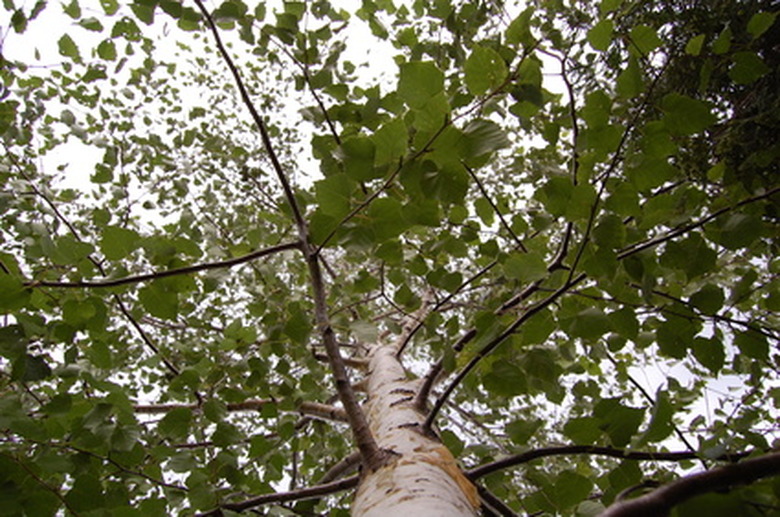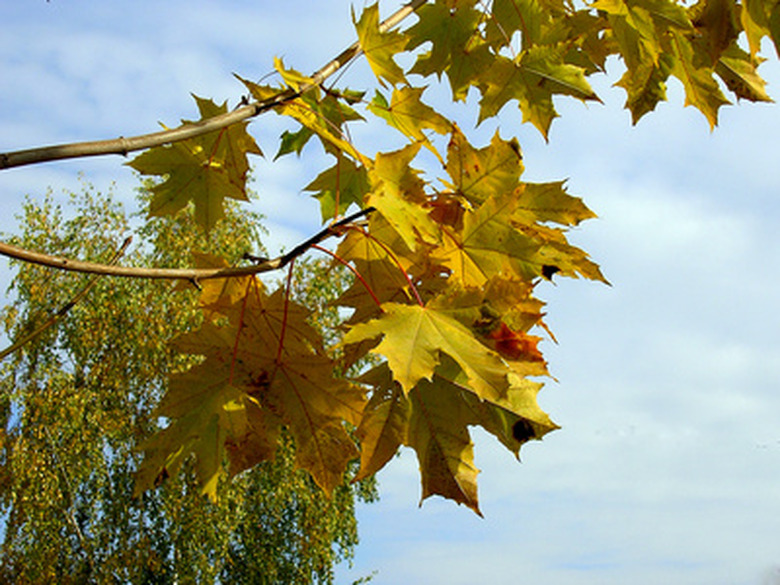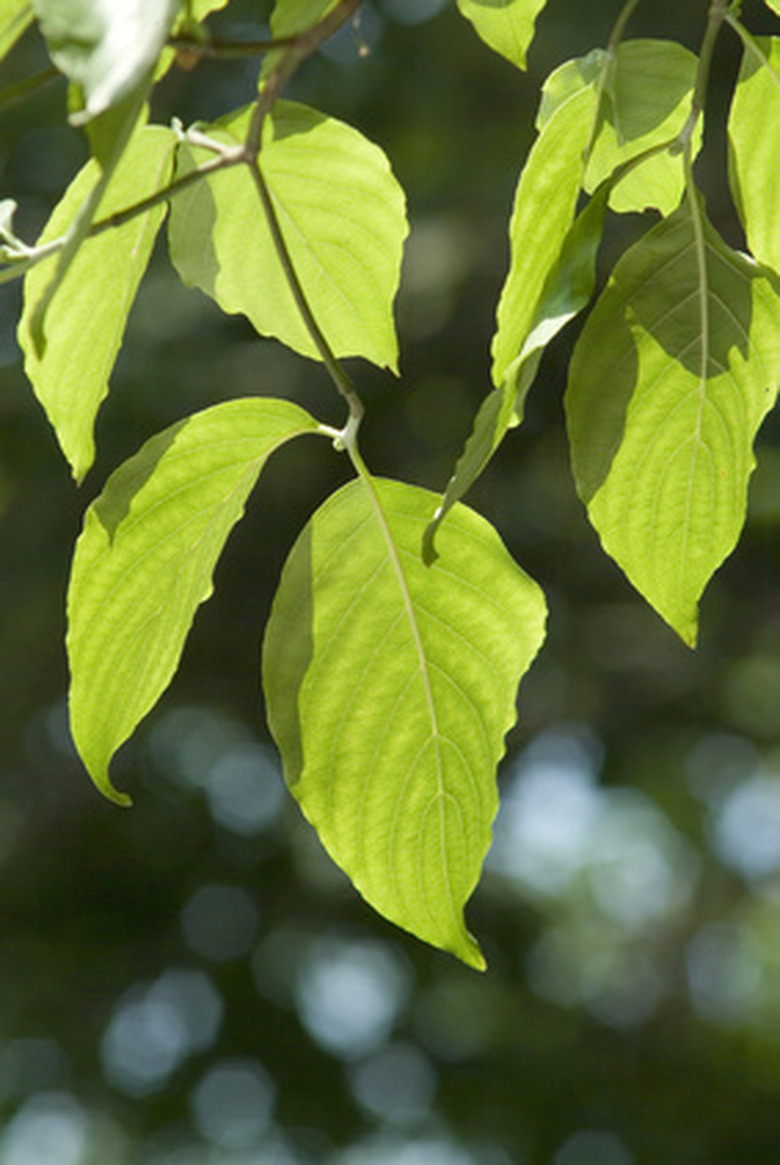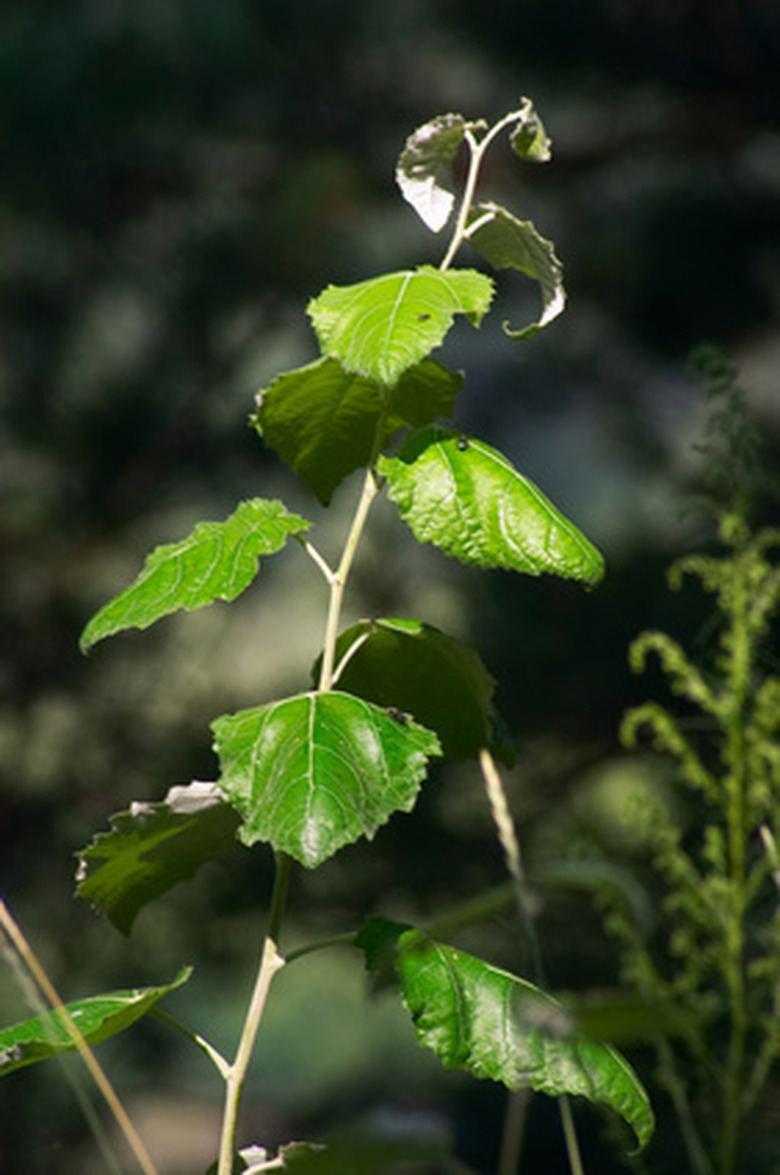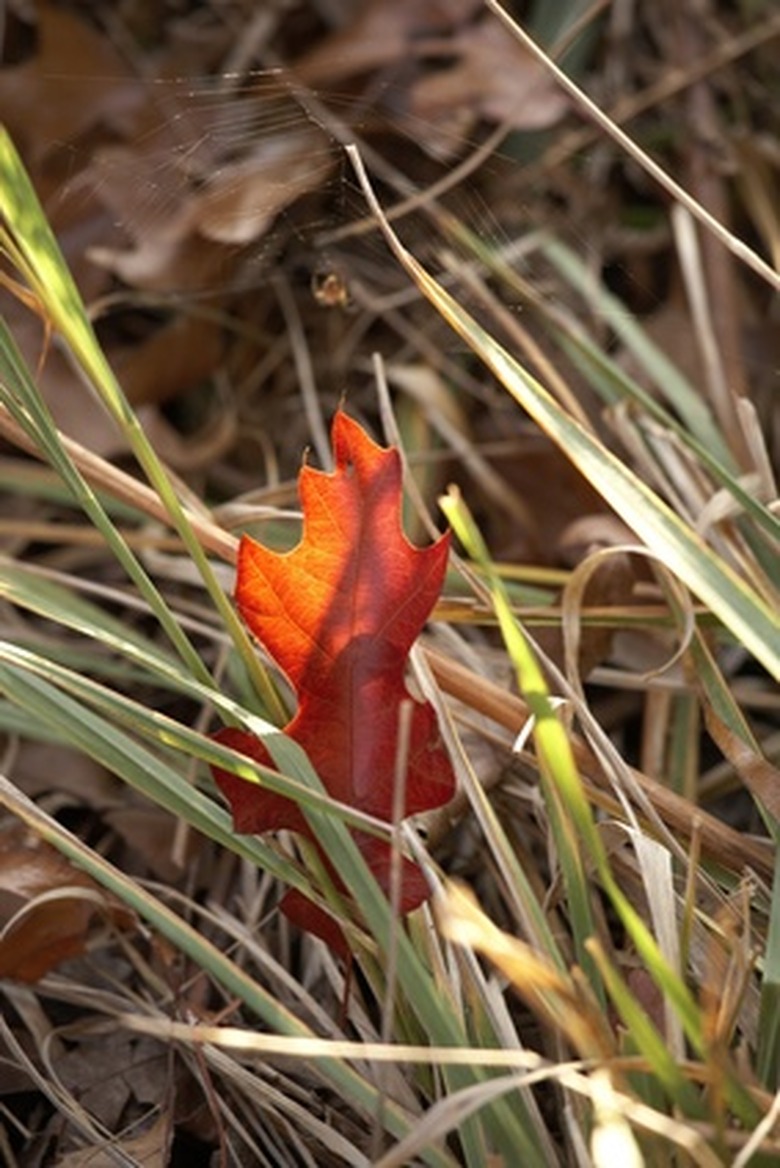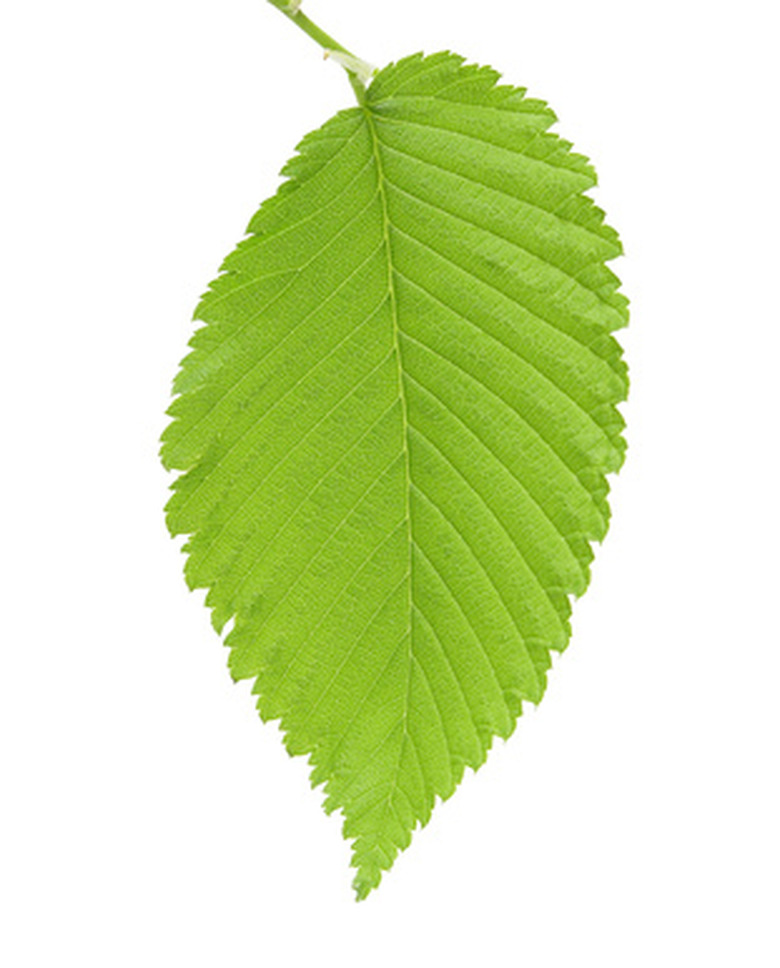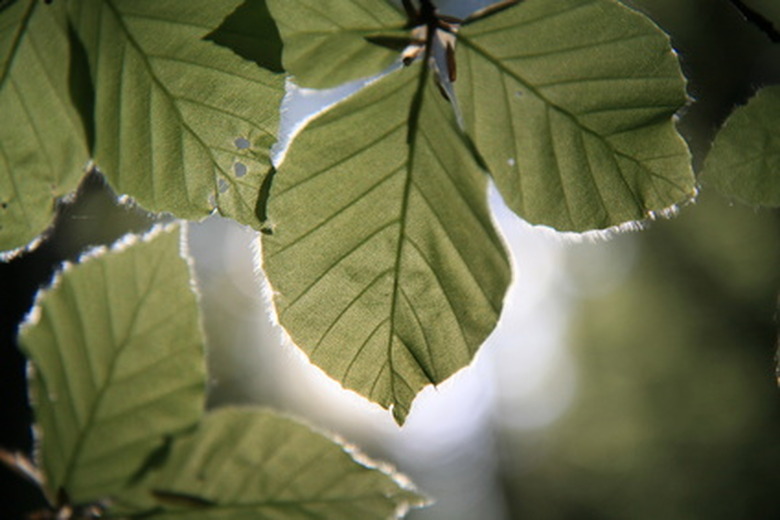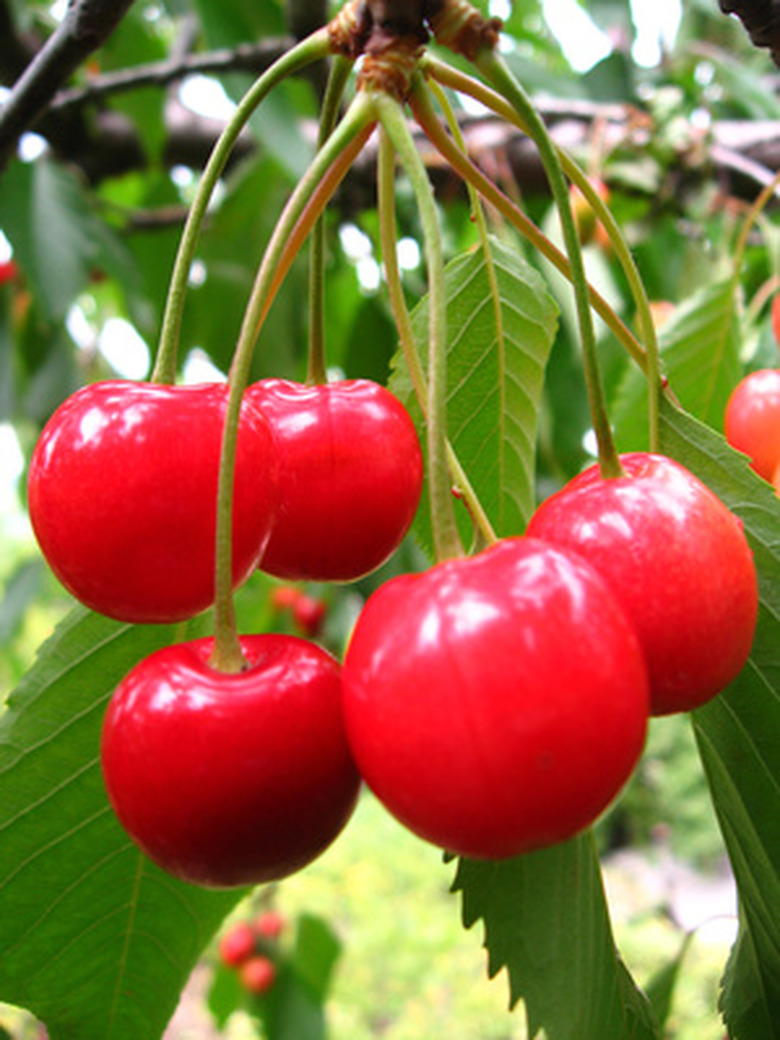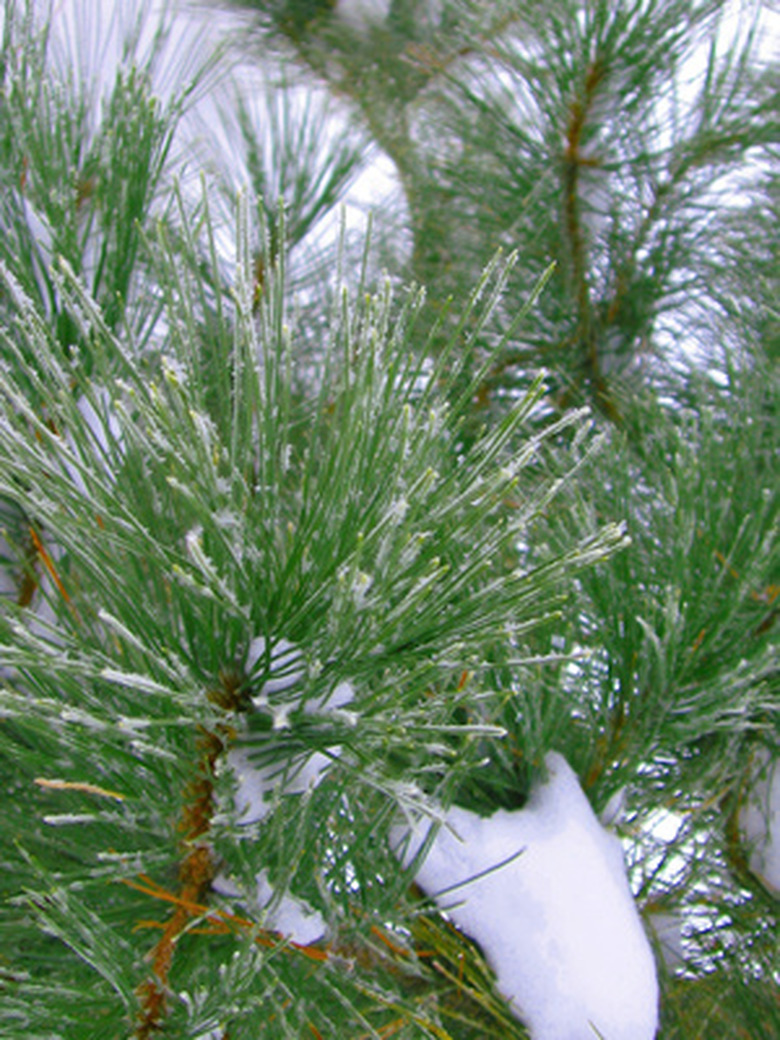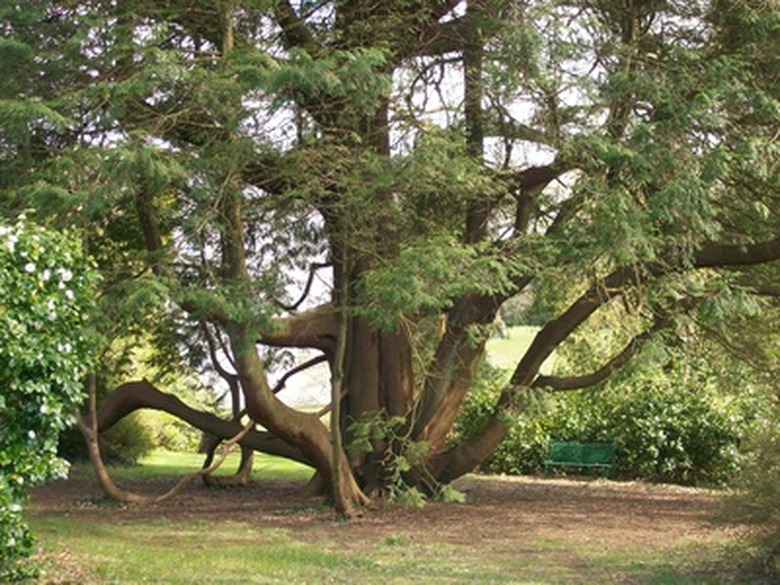How To Identify Trees In Michigan By Their Leaves
More than 100 different species of trees grow in Michigan, with about 64 species being the most common trees found in the state. Michigan's trees are divided into two main categories based on leaf identification, conifers and broadleaf trees. Conifers have needle-like or scale-like, almost always evergreen leaves, while broadleaf trees have flat, broad leaves that are usually deciduous in Michigan, falling from the trees in the fall. By studying the leaf characteristics carefully, you can identify any tree found growing in Michigan.
Identify Broadleaf Trees of Michigan
Step 1
Look for leaves that are compound, meaning that each leaf is comprised of several leaflets on a single stem, and arranged directly opposite from one another on the branch. The horse chestnut has palmate compound leaves with seven leaflets that grow in a hand-like shape on each leaf.
Step 2
Identify the ash tree by its oppositely arranged, compound leaves that have finely-toothed or smooth edges on each pinnate leaflet, meaning that the leaflets are arranged across from each other in rows. The box elder has similar leaves, but its leaf edges are coarsely toothed and lobed.
- More than 100 different species of trees grow in Michigan, with about 64 species being the most common trees found in the state.
- Conifers have needle-like or scale-like, almost always evergreen leaves, while broadleaf trees have flat, broad leaves that are usually deciduous in Michigan, falling from the trees in the fall.
Step 3
Look for compound leaves arranged in an alternate fashion along the branches and not directly across from one another. If the leaflets are small and less than 2 inches long, this is the honey locust tree. If the leaflets are large and more than 2 inches long, the tree is a Kentucky coffee, staghorn sumac, black walnut, butternut or true hickory tree.
Step 4
Identify maple trees by their oppositely arranged and simple leaves, meaning that the leaves grow individually from each stem and are not composed of smaller leaflets. Maple tree leaves are lobed and have a star-like shape.
Step 5
Look for simple, opposite leaves that aren't lobed, are heart-shaped and large to identify the Catalpa tree. If the leaves are simple, opposite, oval-shaped and small or medium-sized, they belong to a dogwood tree.
- Look for compound leaves arranged in an alternate fashion along the branches and not directly across from one another.
- If the leaves are simple, opposite, oval-shaped and small or medium-sized, they belong to a dogwood tree.
Step 6
Spot a sassafras tree by its alternately arranged, simple leaves that are lobed or notched and are as wide as they are long. The sassafras tree's leaves are fragrant and may be tri-lobed or mitten-shaped.
Step 7
Identify the yellow poplar by its simple, alternate leaves with smooth edges and four lobes on each leaf. If the leaf margins, or edges, are finely or coarsely toothed, the leaves belong to a cottonwood, aspen or Balsam poplar tree. If the leaves are mitten-shaped, the tree is a mulberry, and if the leaves have pointed lobes, they're from a sycamore.
Step 8
Look for simple, alternate, lobed leaves that are longer than they're wide to identify red or black oaks and white oak trees. If the leaves are tipped in bristles, they belong to a red or black oak tree, but the leaves are from a white oak if they're rounded.
- Spot a sassafras tree by its alternately arranged, simple leaves that are lobed or notched and are as wide as they are long.
- If the leaf margins, or edges, are finely or coarsely toothed, the leaves belong to a cottonwood, aspen or Balsam poplar tree.
Step 9
Identify the elm, basswood and hackberry trees by their simple, alternate leaves that aren't lobed or notched and have uneven sections on either side of the midrib or center leaf vein. The elm tree has doubly serrated leaf margins, while the basswood has heart-shaped, non-serrated leaves. The hackberry has oval leaves without serrated margins.
Step 10
Spot the redbud and beech trees by their simple, alternate leaves that don't have lobes or notches and are equal in proportion on either side of the midrib or center leaf vein. The redbud has heart-shaped leaves with smooth edges, while the beech has toothed or bristle-like spines at the end of each leaf vein.
Step 11
Look for simple, alternate leaves without lobes that are equal on both sides of the midrib, but that have finely or doubly serrated leaf edges if you want to identify cherry, willow or birch trees. The cherry and willow trees have finely-serrated leaf margins, while the white, gray and yellow birch trees have doubly serrated leaf edges.
- Identify the elm, basswood and hackberry trees by their simple, alternate leaves that aren't lobed or notched and have uneven sections on either side of the midrib or center leaf vein.
- The redbud has heart-shaped leaves with smooth edges, while the beech has toothed or bristle-like spines at the end of each leaf vein.
Identify Michigan Conifers
Step 1
Look for Michigan trees with needle-like leaves growing in bundled clusters of five to identify white pine trees. If the needle-like leaves are in clusters, are soft and flexible and shed from the tree in the fall, it's a Tamarack tree.
Step 2
Look for conifers with needle-like leaves that grow in bundles of two to identify the red pine and Jack pine trees. The red pine's needles are 4- to 6-inches long, while the Jack pine's needles are only 1- to 2-inches long.
Step 3
Study the needle-like leaves to determine whether they're not bundled in clusters and grow singularly to identify the Hemlock and Balsam fir trees, which both have flattened needles. The Hemlock's needles are half an inch long, while the Balsam fir tree's needles are just a bit longer.
Step 4
To identify the white and black spruce trees, look for Michigan conifers with singular needles that don't grow in bundles and have four sides to each needle. The white spruce has smooth "branchlets" with foul-smelling needles, while the black spruce has hairy branchlets with pleasantly scented, shorter needles.
- Look for Michigan trees with needle-like leaves growing in bundled clusters of five to identify white pine trees.
- Study the needle-like leaves to determine whether they're not bundled in clusters and grow singularly to identify the Hemlock and Balsam fir trees, which both have flattened needles.
Step 5
Identify Michigan conifers that have scale-like leaves instead of needle-like leaves, which are the northern white cedar and red cedar trees. The red cedar has four-sided branchlets that form its scale-like leaves, while the northern white cedar has flattened branchlets that form fan-like sprays.
Tip
The sassafras, yellow poplar, cottonwood, aspen, Balsam poplar, mulberry and sycamore trees all have leaves that are as wide as they are long. The red or black oak, white oak, elm, basswood, hackberry, redbud, beech, cherry, willow, and white, yellow and gray birch trees all have leaves that are longer than they are wide.
Warning
Don't confuse the cottonwood, aspen and Balsam poplar trees. The Balsam poplar has yellowish-green leaves, while the cottonwood has medium-green leaves. The aspen's leaves are also medium-green, but unlike the cottonwood they turn orange or reddish in the fall.
